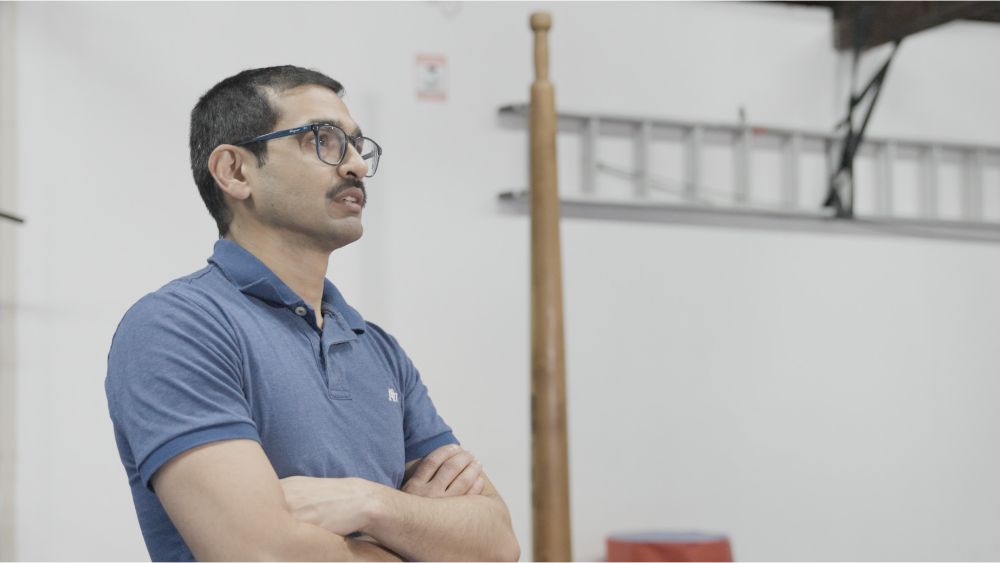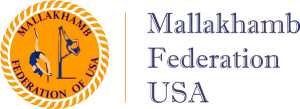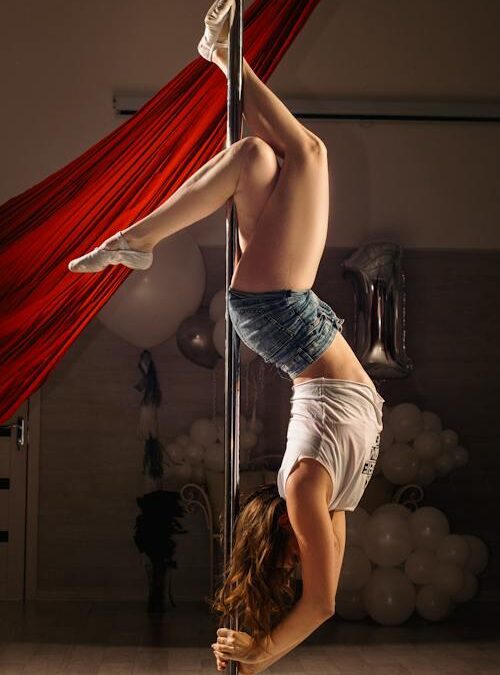Pole fitness, inspired by the ancient Indian sport of Mallakhamb, combines strength, flexibility, and grace. Whether you’re a beginner or an enthusiast, understanding the basics of pole fitness and incorporating effective pole stretching exercises can enhance your overall performance.
In this article, we’ll explore the fundamentals of pole fitness and stretching exercises, demystify Mallakhamb stretching exercises, and guide you through essential stretches.
Understanding Pole Fitness and Mallakhamb
Pole fitness is more than just a workout routine; it’s a holistic approach to health that integrates strength training, flexibility, and dance, all revolving around a vertical pole.
Originating from Mallakhamb, a traditional Indian sport dating back centuries, pole fitness infuses modern fitness principles with the grace and strength of Mallakhamb.
Pole fitness exercises and Mallakhamb stretching exercises share the essence of strength, grace, and tradition. Mallakhamb, originating from India centuries ago, involves performing various acrobatic and gymnastic feats on a wooden pole or rope. It requires exceptional strength, balance, and agility.
Pole fitness, on the other hand, emerged as a modern fitness trend but draws inspiration from Mallakhamb’s ancient practices. Both disciplines utilize a vertical pole as a central prop for executing dynamic pole movements and poses. They emphasize core strength, flexibility, and body control.
While Mallakhamb focuses on traditional Indian techniques and cultural significance, pole fitness incorporates contemporary fitness elements, such as dance and strength training. Despite their differences, both forms celebrate the beauty of the human body in motion and offer practitioners a unique blend of physical pole stretching exercises and mental benefits.
Through the fusion of tradition and innovation, pole fitness exercises pay homage to Mallakhamb’s legacy while adapting to the evolving fitness landscape, creating a dynamic and inclusive space for enthusiasts worldwide.
The Benefits of Pole Fitness
Pole fitness isn’t just about showcasing acrobatic moves; it’s a comprehensive fitness regimen with numerous benefits:
Core Strength
Engaging in pole fitness routines helps in building a robust core, essential for stability and balance in everyday pole movements. From yoga postures to modern day stretching exercises, pole fitness exercises with Mallakhamb helps build core strength.
Muscle Toning
The various pole stretching exercises performed on the pole target different muscle groups, resulting in overall muscle toning and definition.
Flexibility
Pole fitness stretching exercises enhances flexibility, allowing for a greater range of motion and improved agility.
Stretching Exercises for Mallakhamb Training
Before embarking on the exhilarating journey of Mallakhamb, it’s crucial to prep your body with the right pole stretching exercises:
Warm-Up
Kickstart your Mallakhamb exercises with a light cardio warm-up to elevate your heart rate and prime your muscles for action. Simple activities like jogging in place or jumping jacks are perfect to get the blood flowing.
Dynamic Stretches
Dynamic stretches are key to improving flexibility and mobility. Incorporate movements like leg swings, arm circles, and torso twists into your routine to limber up your body.
Static Stretches
Hold static stretches for about 20-30 seconds to elongate the muscles and improve flexibility. Focus on major muscle groups with these stretches:
- Hamstring Stretch
Sit on the floor with one leg extended and the other bent. Reach towards your toes, feeling the stretch along the back of your thigh.
- Quad Stretch
Stand on one leg and gently pull your other foot towards your glutes, feeling the stretch in the front of your thigh.
- Hip Flexor Stretch
Kneel on one knee, push your hips forward, and lean slightly backward to stretch the hip flexors.
- Shoulder Stretch
Extend one arm across your chest and use the opposite hand to gently pull it towards your body, feeling the stretch in your shoulder and upper back.
- Back Stretch
Sit on the floor with your legs extended and reach forward, aiming to touch your toes while keeping your back straight.
- Spinal Twists
Sit on the floor, cross one leg over the other, and twist your upper body towards the bent knee, alternating sides.
- Neck Stretches
Gently tilt your head from side to side and forward and backward to release tension in the neck muscles.
Safety Tips for Mallakhamb Training
While Mallakhamb along with pole stretching exercise training can be immensely rewarding, it’s essential to prioritize safety:
- Expert Guidance
Always practice under the supervision of a trained instructor to ensure proper form and technique.
- Equipment Quality
Use sturdy poles or ropes that can support your weight and withstand rigorous pole stretching exercises.
- Listen to Your Body
Pay attention to your body’s signals and avoid pushing yourself beyond your limits to prevent injuries.
- Hydration and Nutrition
Stay hydrated before, during, and after your Mallakhamb exercises, and maintain a balanced diet to fuel your body adequately.
Promoting Mental Well-Being with Pole Fitness and Mallakhamb
Integrating Mallakhamb pole fitness stretching exercises into your routine isn’t just about physical health; it’s also a boon for your mental well-being. Engaging in regular pole stretching exercises has been shown to uplift mood, alleviate stress, and elevate confidence levels.
Progression And Goal Setting in Pole Fitness and Mallakhamb
Empower your Mallakhamb journey with thoughtful progression and goal-setting strategies
- Establish attainable goals tailored to your Mallakhamb practice.
- Monitor your advancements and acknowledge even the smallest victories along the way.
- Gradually escalate the intensity of your workouts to push your limits and foster growth.
Conclusion
Pole fitness stretching exercises intertwined with Mallakhamb tradition offers a unique blend of physical prowess and artistic expression. By incorporating stretching exercises into your Mallakhamb training routine, you not only enhance your flexibility and strength but also honor a rich cultural heritage while embarking on your fitness journey.
So, grab that pole, stretch those muscles, and embrace the transformative power of pole fitness stretching exercises!
FAQs
1. What is the origin of pole fitness and Mallakhamb?
Pole fitness exercises originated as a modern fitness trend, drawing inspiration from various dance and gymnastic forms. Mallakhamb, on the other hand, is an ancient Indian sport that dates back centuries, involving acrobatic and gymnastic movements performed on a wooden pole or rope.
2. How does pole fitness relate to Mallakhamb?
Pole fitness shares similarities with Mallakhamb in terms of using a vertical pole as a prop for pole stretching exercises. While Mallakhamb is deeply rooted in Indian tradition and culture, pole fitness incorporates modern fitness techniques while honoring the strength and grace of Mallakhamb.
3. What are the key benefits of pole fitness and Mallakhamb training?
Both pole fitness and Mallakhamb training offer a range of benefits, including improved core strength, enhanced flexibility, muscle toning, and increased body awareness. Additionally, they promote mental well-being through stress reduction and confidence-building.
4. Can anyone practice pole fitness or Mallakhamb?
Yes, both pole fitness and Mallakhamb training are accessible to individuals of all fitness levels and backgrounds. However, beginners are advised to start under the guidance of a trained instructor to learn proper techniques and ensure safety.
5. Are there specific stretching exercises tailored for Mallakhamb training?
Yes, incorporating pole stretching exercises into Mallakhamb training is essential for improving flexibility and preventing injuries. Dynamic stretches like leg swings and arm circles, as well as static stretches focusing on major muscle groups, are beneficial for Mallakhamb practitioners.
6. How often should one practice pole fitness or Mallakhamb?
The frequency of practice depends on individual goals, fitness levels, and schedules. Ideally, practitioners should aim for regular sessions, incorporating both training and rest days to allow for proper recovery and muscle growth.
7. Is Mallakhamb training safe?
Mallakhamb training can be safe when practiced under the guidance of a qualified instructor and with proper equipment. It’s essential to listen to your body, avoid overexertion, and follow safety guidelines to minimize the risk of injuries.


